
Overview
This article presents ten leading digital marketers poised to significantly elevate direct-to-consumer (DTC) brand growth through a variety of strategic approaches, including:
- Conversion Rate Optimization (CRO)
- SEO
- Content marketing
- Social media engagement
Each marketer’s methodology is bolstered by compelling case studies and examples that illustrate measurable enhancements in conversion rates and average order values. These insights underscore the effectiveness of tailored marketing strategies in fostering sustainable growth for DTC companies.
Introduction
In a rapidly evolving marketplace, direct-to-consumer (DTC) brands encounter the formidable challenge of distinguishing themselves amid intense competition. The implementation of the right digital marketing strategies can serve as a pivotal factor, driving brands toward sustainable growth and fostering increased customer loyalty. This article delves into ten of the most influential digital marketers whose expert insights and innovative techniques possess the potential to elevate DTC brands. It addresses the pressing question: which strategies will genuinely propel success in 2025 and beyond?
Parah Group: Expert Strategies for DTC Brand Growth
Parah Group exemplifies a holistic approach to Conversion Rate Optimization (CRO), employing user session recordings, competitor analysis, and continuous A/B testing to achieve remarkable improvements in conversion rates and average order values (AOV). By tapping into consumer psychology, they develop tailored solutions that adeptly tackle the unique challenges faced by direct-to-consumer (DTC) companies. This strategy not only fosters sustainable growth but also achieves these outcomes without escalating advertising costs. Their methodologies consistently yield measurable results, including notable increases in AOV and sales rates, underscoring the effectiveness of a comprehensive CRO strategy tailored to the specific needs of DTC companies.
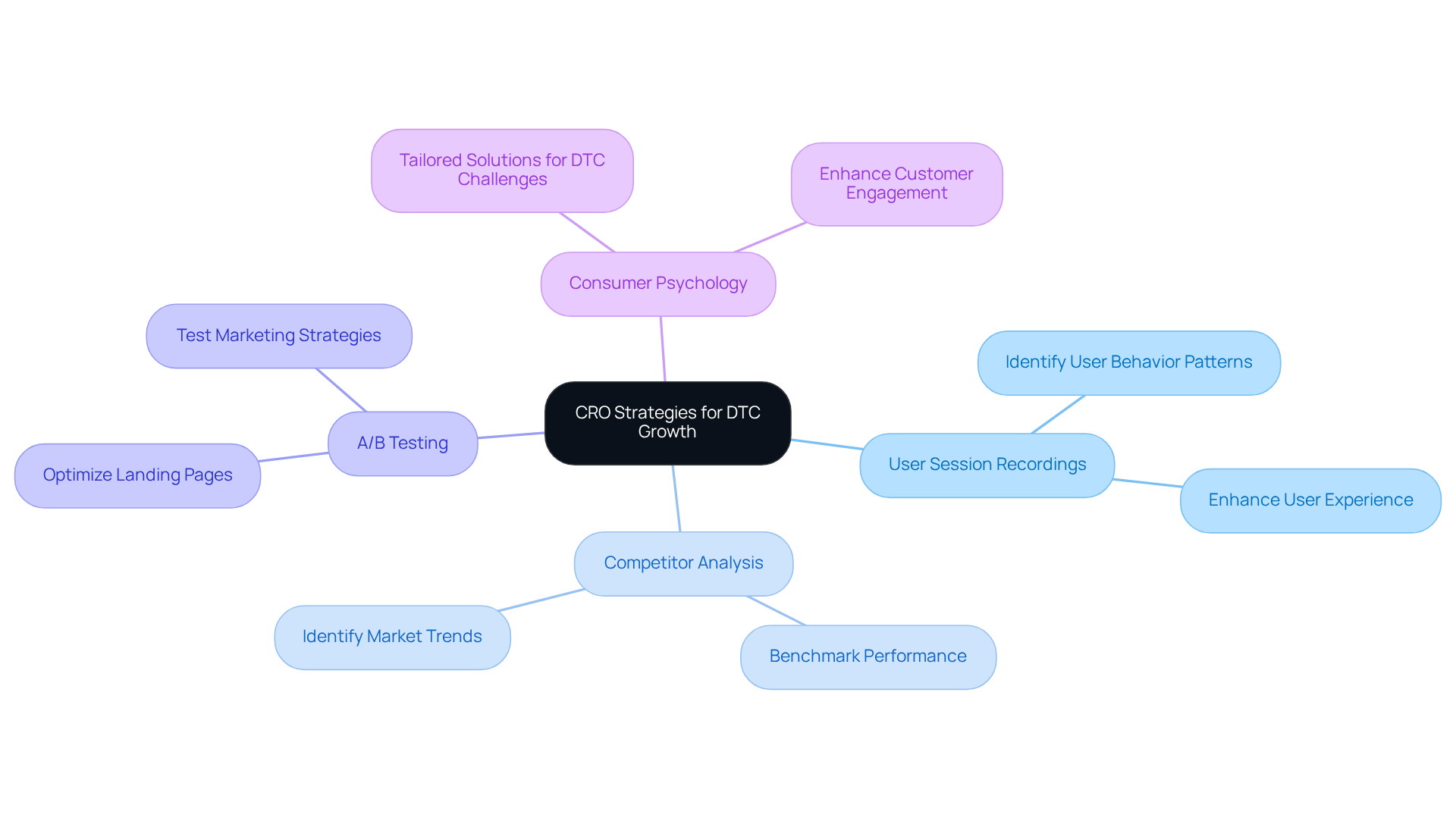
Neil Patel: Proven Digital Marketing Strategies for DTC Brands
Neil Patel underscores the pivotal role of SEO and content marketing in enhancing traffic and sales for direct-to-consumer (DTC) companies. His strategy focuses on optimizing website content to align with search engine algorithms. By leveraging social proof, businesses can build trust, while crafting compelling calls to action drives user engagement.
Prioritizing these strategies enables DTC companies to significantly boost their online visibility, attract a larger pool of qualified leads, and ultimately achieve improved conversion rates.
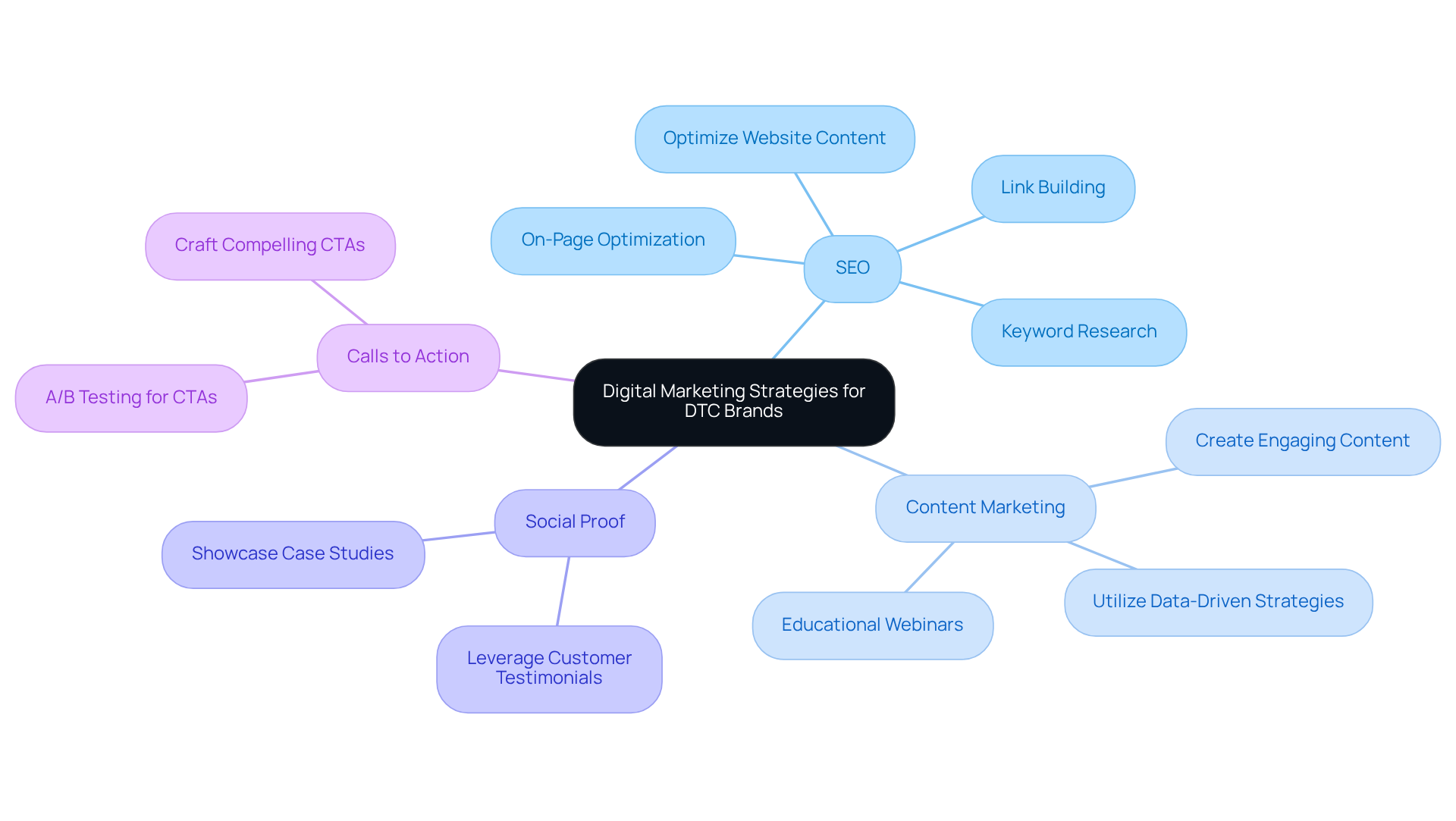
Rand Fishkin: Insights on SEO and Audience Intelligence for DTC Success
Rand Fishkin emphasizes the critical significance of comprehending audience behavior and preferences for DTC companies. By leveraging advanced tools for audience segmentation and keyword research, these companies can craft targeted marketing campaigns that resonate effectively with their customers. His expertise in SEO underscores the vital necessity to optimize for user intent, a strategy proven to significantly enhance conversion rates.
Current trends indicate that companies focusing on data-driven insights and fostering emotional connections with consumers are more likely to achieve long-term loyalty and heightened engagement. As DTC marketing evolves, integrating these strategies will be essential for companies striving to thrive in a competitive landscape.
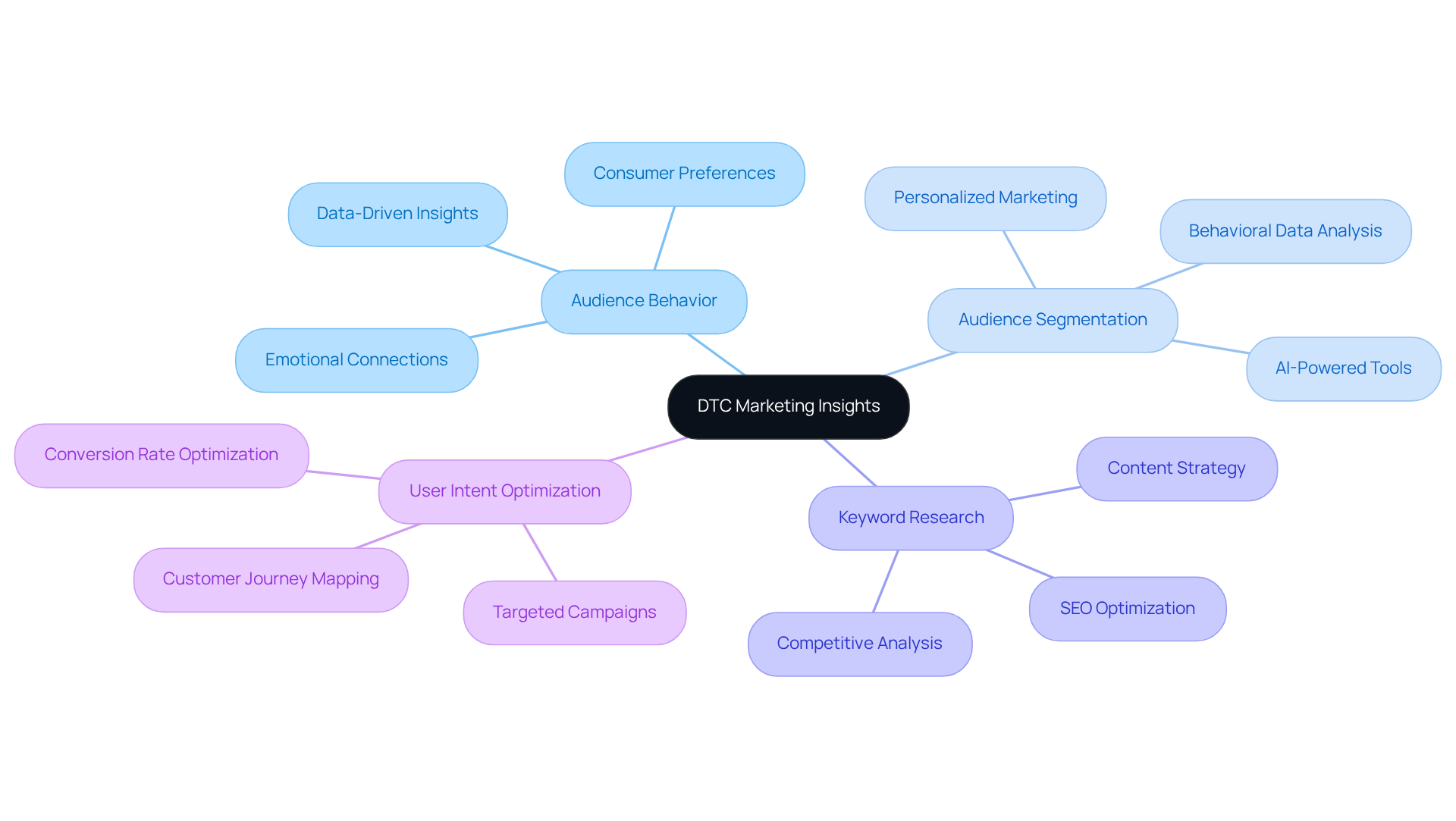
Gary Vaynerchuk: Innovative Brand Storytelling for DTC Engagement
Gary Vaynerchuk asserts the transformative power of storytelling in forging emotional connections with consumers. Direct-to-consumer (DTC) companies can harness this potential by developing compelling narratives that encapsulate their products and values.
Nevertheless, storytelling alone is insufficient; companies must also focus on refining their engagement strategies to realize measurable outcomes. For instance, Parah Group has successfully revolutionized the profitability of various DTC brands through innovative methods aimed at enhancing conversion rates.
In one notable case, a $30 million apparel company witnessed a remarkable 35% increase in conversion rates after revamping their homepage to highlight social proof and optimizing product pricing. Likewise, a cleaning product company augmented their average order value by 80% through strategic bundling and price testing.
By integrating authentic storytelling with effective optimization techniques, DTC companies can foster loyalty and significantly boost their revenue growth.
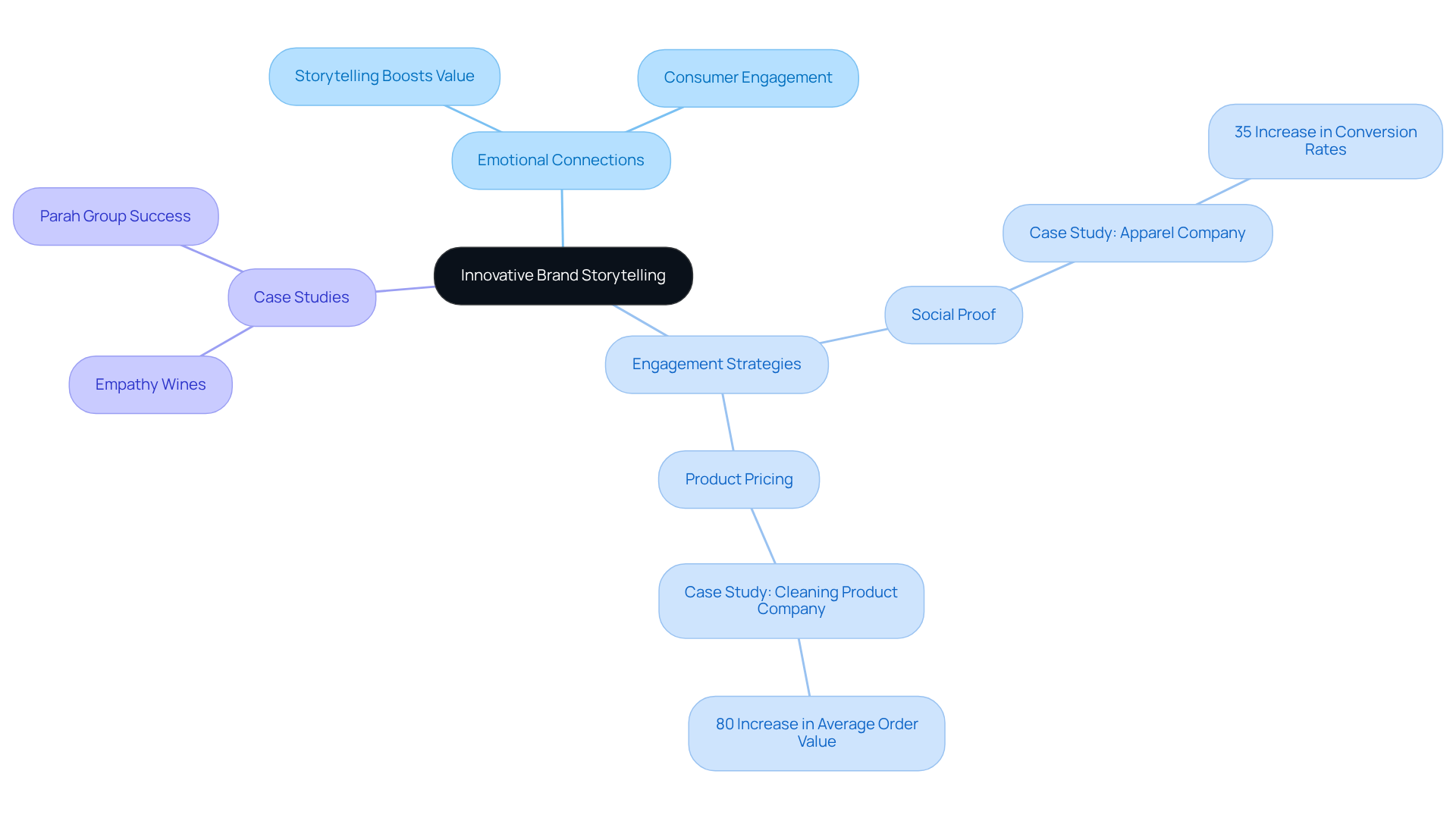
Ann Handley: Mastering Content Marketing for DTC Brands
Ann Handley asserts the critical importance of crafting high-quality, relevant content that resonates with the target audience. For direct-to-consumer companies, focusing on:
- Storytelling
- Informative content
- Customer-centric messaging
is essential for building trust and driving conversions. By mastering content marketing effectively, companies can significantly enhance their online presence and cultivate deeper engagement with customers. This strategy not only establishes trust but also fosters loyalty, as consumers increasingly favor companies that prioritize their needs and preferences.
Successful examples abound, showcasing companies that leverage educational content to inform their audience, thus enhancing trust and encouraging repeat purchases. Ultimately, creating engaging, customer-centric messaging is vital for DTC success, as it directly influences sales rates and customer retention.
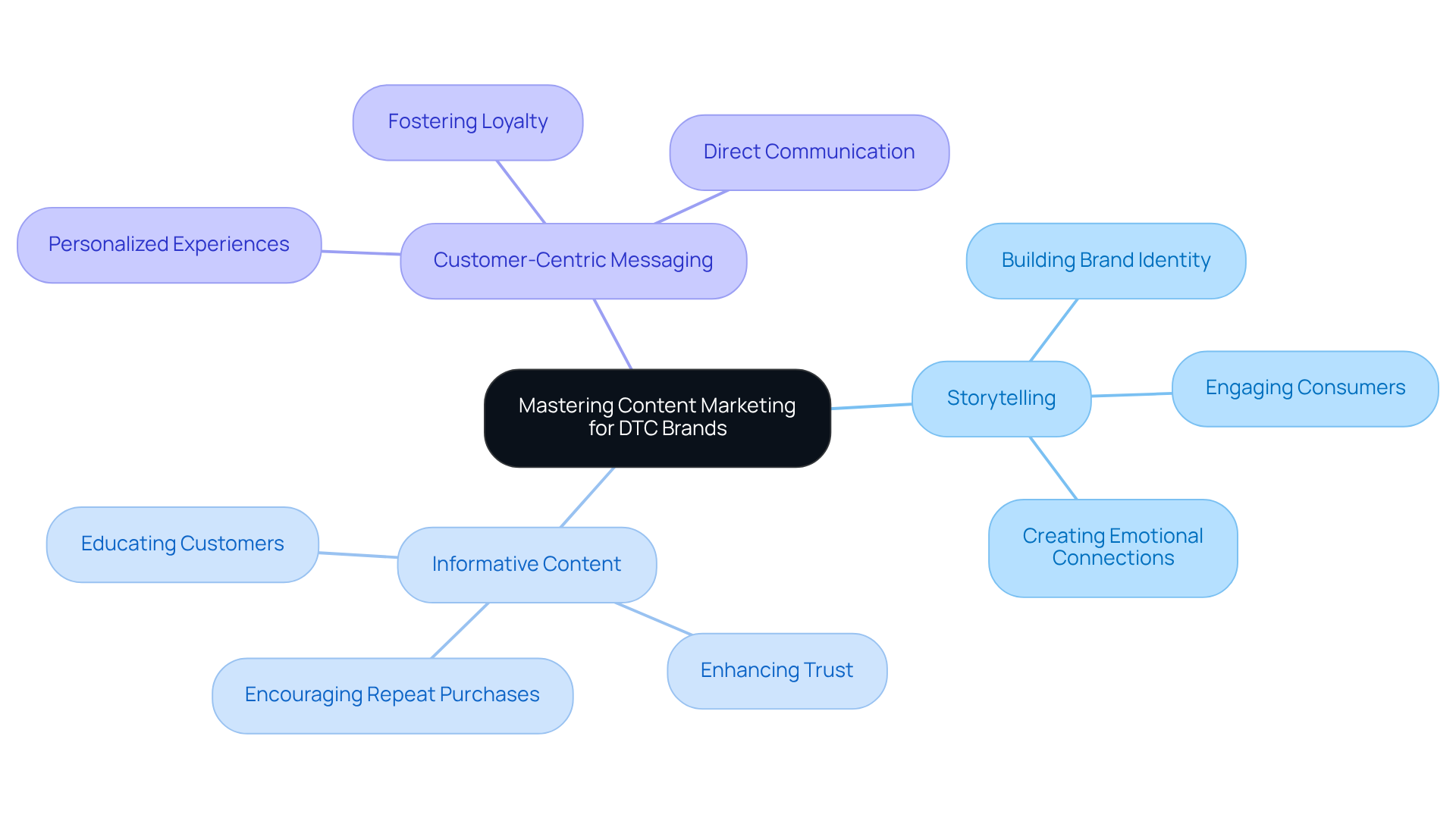
Amit Anthony Khera: Leveraging Analytics for DTC Marketing Optimization
Amit Anthony Khera asserts the critical role of analytics in understanding customer behavior and optimizing marketing strategies. Direct-to-consumer (DTC) companies must harness the power of tools such as Google Analytics and heatmaps to meticulously track user interactions and pinpoint areas ripe for enhancement. By making data-informed decisions, these companies can refine their marketing tactics and significantly boost conversion rates.
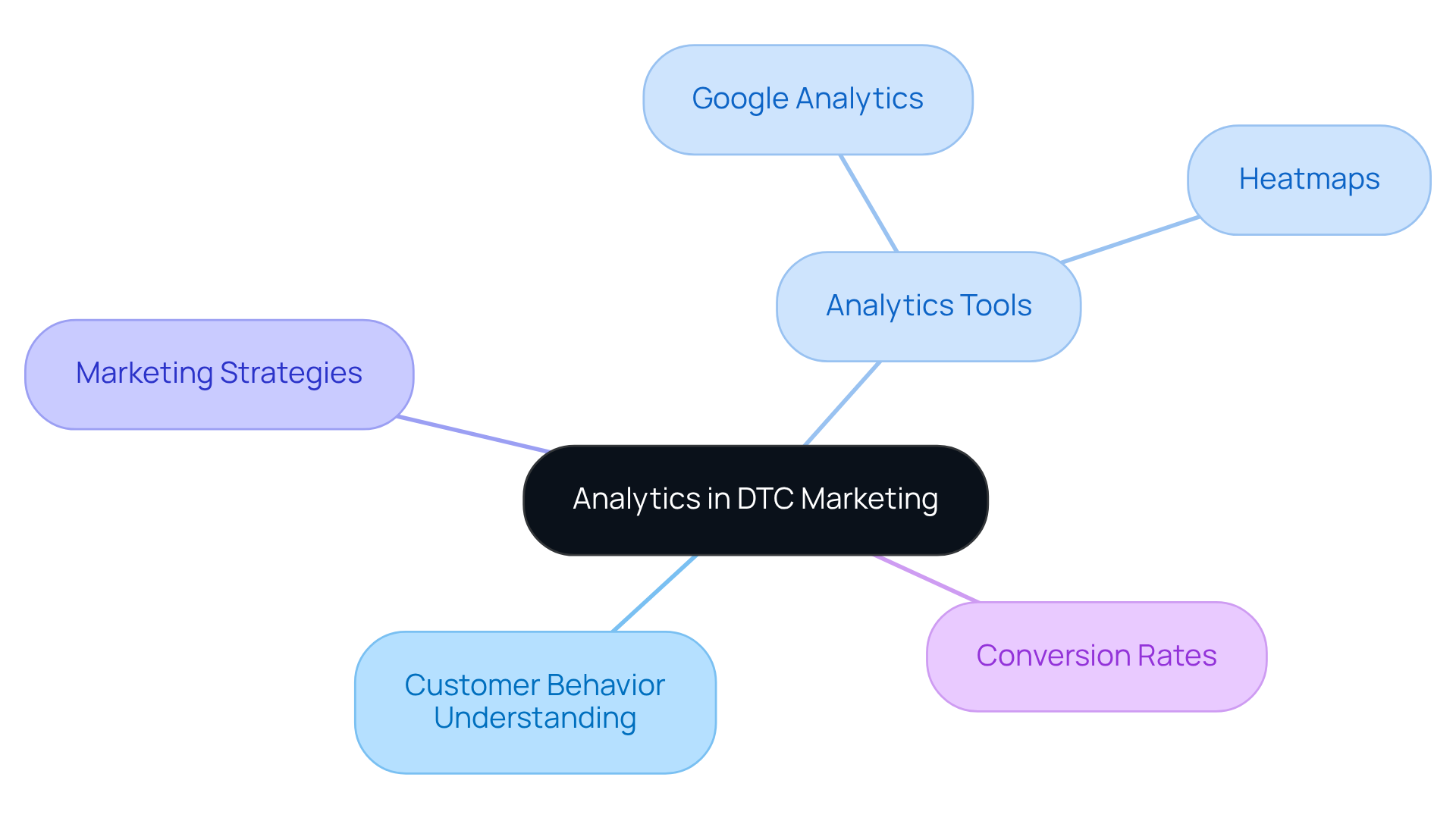
Purna Virji: Navigating Search Marketing Trends for DTC Brands
Purna Virji emphasizes the necessity for DTC companies to adapt to the evolving landscape of search marketing, particularly in the realms of voice search and mobile optimization. Given that mobile devices constitute a substantial share of online traffic, projections indicate that by 2025, mobile commerce will account for nearly 73% of all e-commerce sales. Thus, optimizing websites for mobile use is not just beneficial; it is essential. This optimization encompasses:
- Ensuring rapid load times
- Intuitive navigation
- Mobile-friendly layouts
As 53% of mobile users abandon sites that take longer than three seconds to load.
Equally critical is voice search optimization, which aligns with the increasing trend of consumers utilizing voice-activated devices for shopping. DTC companies that implement voice search techniques can significantly enhance their visibility, thereby facilitating easier access for potential customers. By integrating mobile-focused keywords and well-organized data, companies can improve their chances of appearing in voice search results, ultimately leading to higher engagement rates.
Incorporating comprehensive Conversion Rate Optimization (CRO) strategies is vital for maximizing profitability. With a decade of agency and in-house media buying experience, we recognize that CRO represents the highest ROI marketing lever available. Unlike ad spend, which ceases to yield results once payments stop, the benefits of CRO can produce returns for months. DTC companies that adopt a thorough and data-informed strategy to CRO can ensure that their paid advertisements and landing pages are meticulously aligned, resulting in substantial growth and improved success rates. Staying ahead of these trends not only enhances visibility but also significantly increases the likelihood of conversion, empowering DTC companies to thrive in a competitive marketplace.
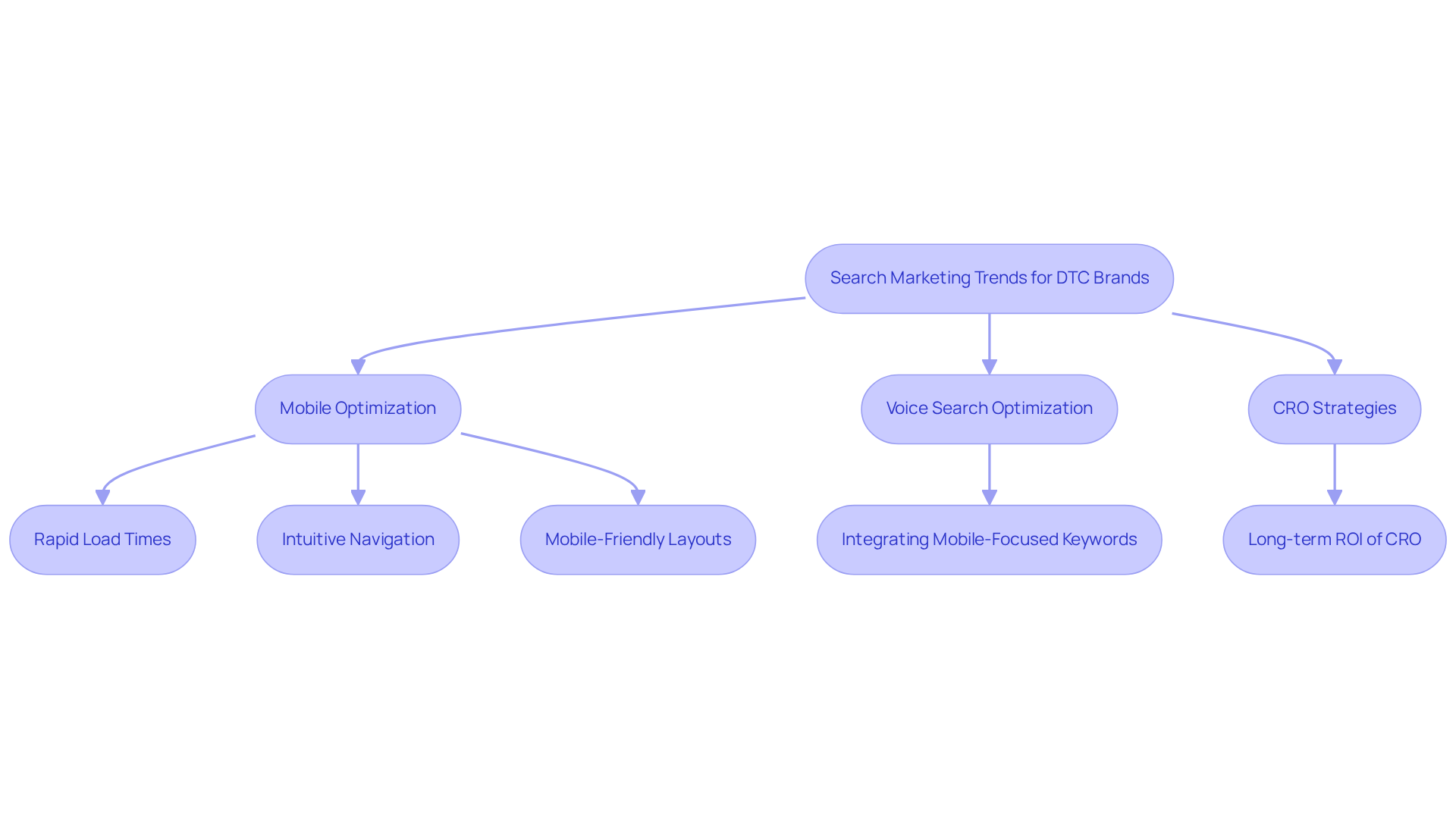
Kim Garst: Social Media Strategies for DTC Brand Growth
Kim Garst underscores the critical importance of establishing a robust social media presence for DTC companies. By crafting engaging content and actively interacting with followers, these companies can cultivate a strong sense of community and loyalty. Furthermore, leveraging targeted ads and influencer partnerships can significantly enhance reach and drive conversions.
For instance, Gymshark has effectively harnessed influencer partnerships, which account for 10% of their sales and yield an impressive 6.5x ROI through authentic connections. Similarly, Glossier's strategic employment of micro-influencers has proven effective in amplifying brand awareness and driving sales, with 49% of consumers relying on influencer recommendations when making purchase decisions.
However, DTC companies must also confront challenges in influencer marketing, including the selection of suitable influencers and the measurement of ROI. To leverage influencer partnerships effectively, brands should prioritize building genuine relationships with influencers who align with their brand values.
Moreover, companies like Parah Group have demonstrated the effectiveness of conversion rate optimization (CRO) in driving revenue growth. Through compelling case studies, they illustrate how strategic website enhancements—such as optimizing product pricing, gamifying shipping thresholds, and implementing post-purchase upsells—can markedly elevate sales rates and average order values.
For example, one clothing label experienced a remarkable 35% increase in conversion rates and a 10% rise in revenue per visitor after applying these methods. This reinforces the notion that while social media strategies are indispensable, integrating effective CRO practices can further amplify the success of DTC companies.
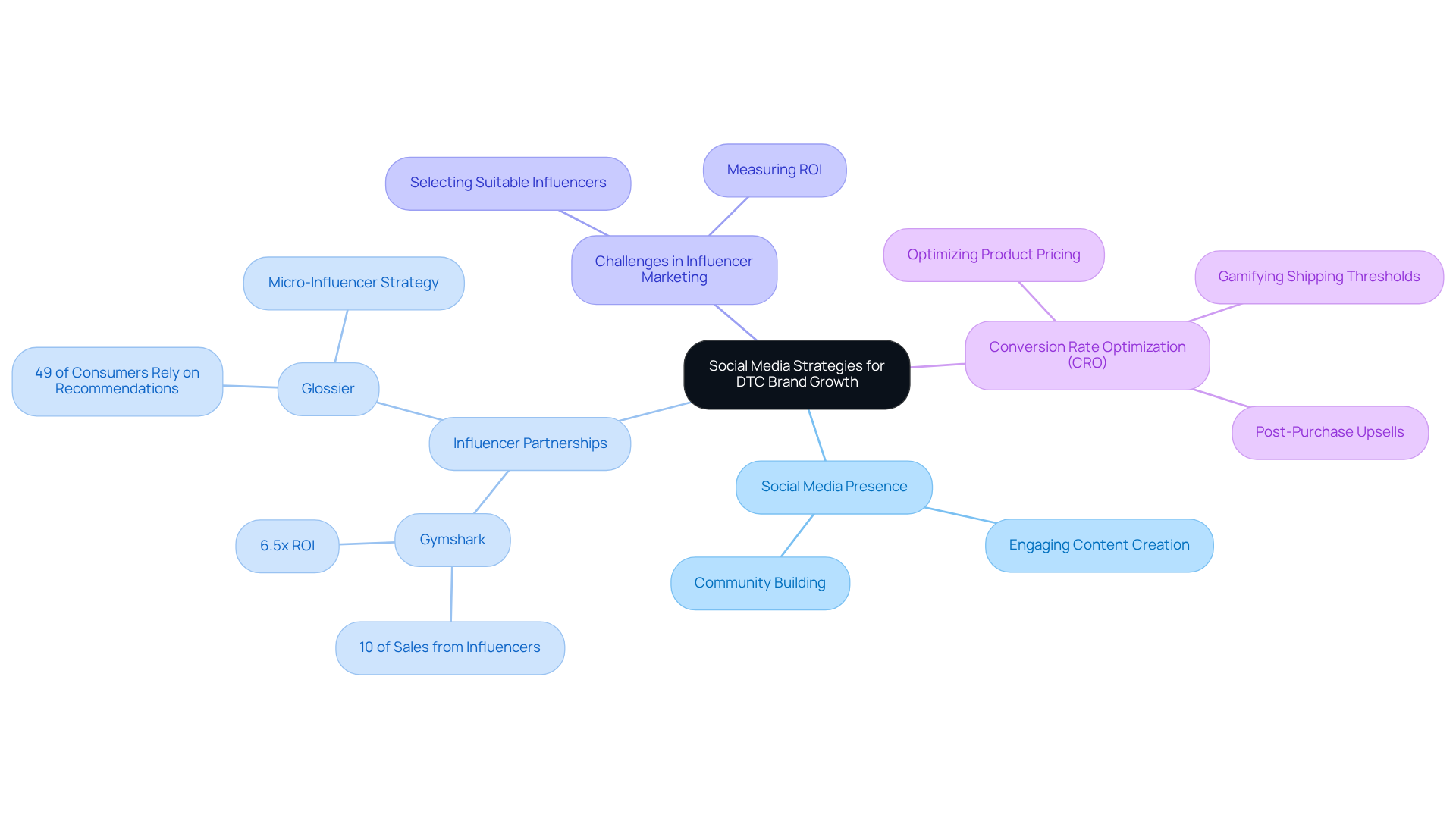
Shama Hyder: Building Online Brands for DTC Loyalty
Shama Hyder emphasizes the necessity of establishing a robust online identity that effectively connects with customers. Direct-to-consumer (DTC) companies must focus on delivering consistent messaging alongside exceptional customer experiences to cultivate loyalty. By prioritizing customer satisfaction, these companies can significantly enhance retention rates and drive repeat purchases.
Parah Group serves as a prime example of this strategy through their innovative optimization techniques, as evidenced by their successful case studies. For instance, a $30 million apparel company experienced a remarkable 35% increase in conversion rates and a 10% rise in revenue per visitor following the implementation of Parah Group's tailored strategies. Similarly, Grab Green, a $15 million cleaning product company, achieved an impressive 80% increase in average order value by optimizing their pricing and bundling products.
These transformational results underscore the critical role of strategic conversion rate optimization (CRO) in enhancing profitability for DTC companies, illustrating how targeted efforts can lead to substantial growth and foster customer loyalty.
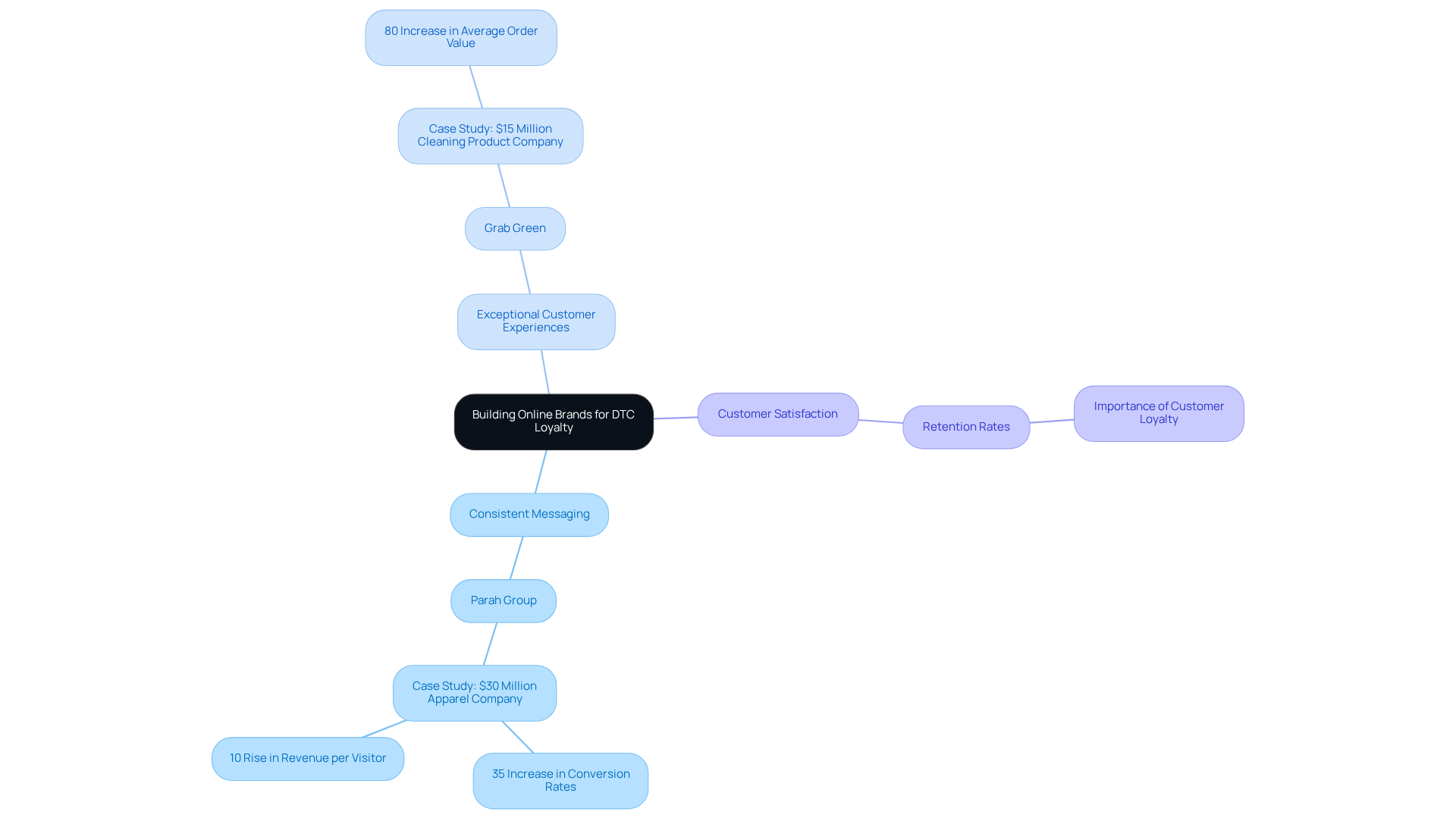
Brian Dean: SEO and Content Strategies for DTC Brand Visibility
Brian Dean emphasizes the crucial synergy between SEO and high-quality content in enhancing visibility for DTC businesses. By prioritizing keyword optimization and effective link building, companies can significantly enhance their organic traffic and conversion potential. Companies that employ strong keyword strategies frequently experience a notable rise in search rankings, with the leading result on Google obtaining roughly 27.6% of all clicks.
Moreover, link building remains a cornerstone of SEO success; it not only enhances domain authority but also generates referral traffic, which is essential for DTC companies seeking to broaden their reach. Dean's approach underscores the necessity of creating valuable content that resonates with target audiences, thereby fostering engagement and loyalty. By combining these strategies, DTC companies can successfully navigate the competitive landscape and achieve lasting growth.
Furthermore, Parah Group illustrates how innovative techniques for optimizing rates can enhance the profitability of direct-to-consumer labels. For instance, a $30M apparel company that partnered with Parah Group experienced a 35% increase in conversion rates and a 10% rise in revenue per visitor after implementing strategic homepage redesigns and gamified shipping thresholds. Similarly, a $15M cleaning product company improved its average order value by 80% through optimized pricing and bundling strategies.
These case studies demonstrate the profound impact that targeted CRO initiatives can have on driving revenue growth and enhancing profitability for DTC brands.
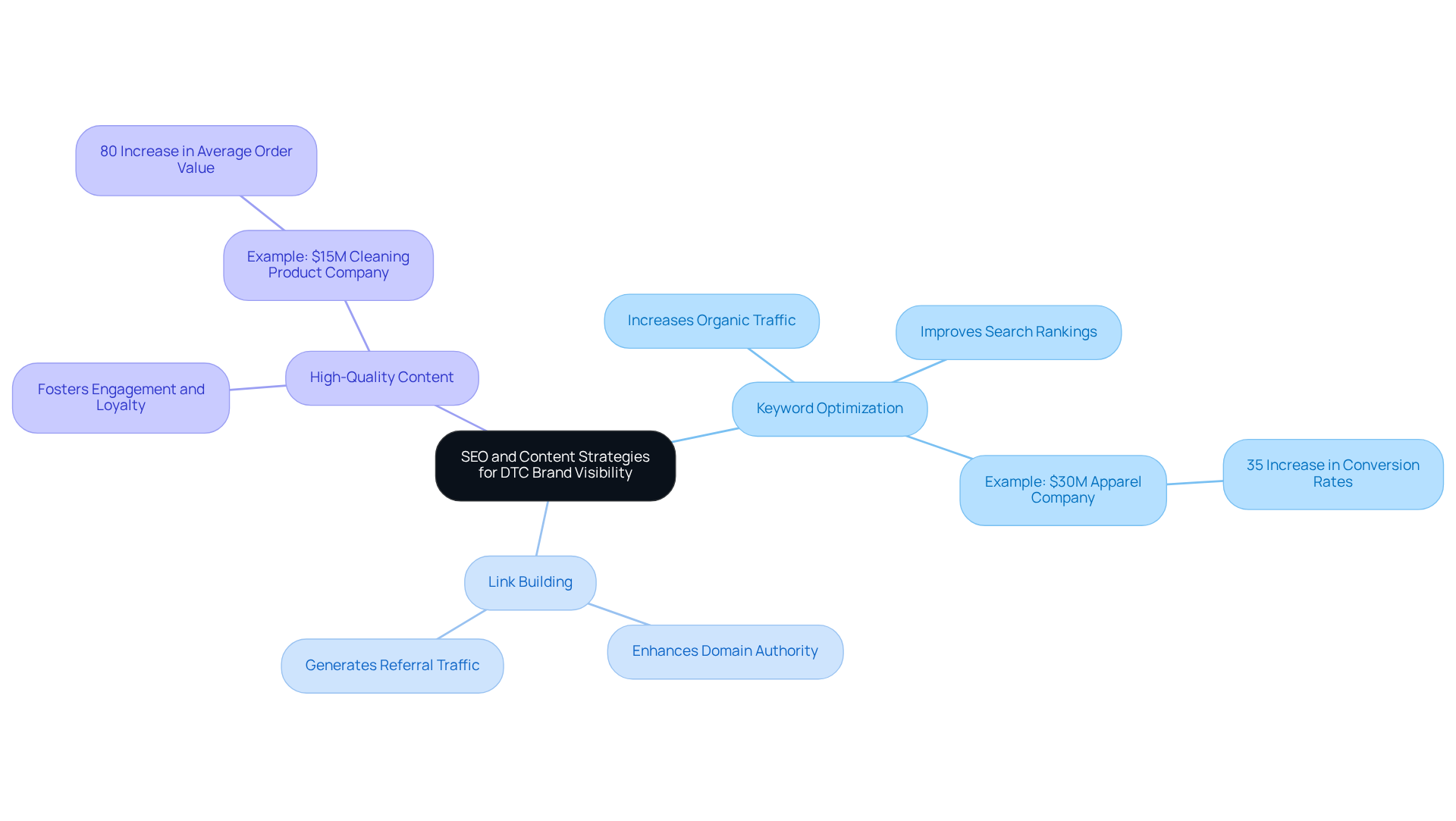
Conclusion
The success of direct-to-consumer (DTC) brands is fundamentally rooted in the implementation of effective digital marketing strategies. By leveraging the insights and methodologies of leading digital marketers, companies can significantly enhance their growth potential. Each expert highlighted in this article contributes a unique approach, from Parah Group's comprehensive conversion rate optimization to Neil Patel's focus on SEO and content marketing. Collectively, these strategies underscore the necessity of understanding consumer behavior, optimizing online presence, and crafting compelling narratives that resonate with audiences.
This article outlines key strategies that DTC brands can adopt to refine their marketing efforts. For instance, Rand Fishkin's emphasis on audience intelligence ensures that campaigns are meticulously tailored to meet customer preferences. Meanwhile, Gary Vaynerchuk's storytelling techniques cultivate emotional connections that drive engagement. Additionally, Ann Handley's dedication to high-quality content and Kim Garst's innovative social media strategies illustrate how building a robust online community can lead to increased loyalty and repeat purchases. The integration of data analytics, as highlighted by Amit Anthony Khera, further empowers brands to make informed decisions that enhance their marketing effectiveness.
In a rapidly evolving marketplace, DTC brands must prioritize these innovative strategies to maintain competitiveness. Embracing digital marketing techniques that align with current trends not only boosts visibility but also fosters deeper connections with consumers. By taking actionable steps based on the insights shared by these experts, DTC companies can pave the way for sustainable growth and success in the years to come.
Frequently Asked Questions
What is the main focus of Parah Group's approach to DTC brand growth?
Parah Group employs a holistic approach to Conversion Rate Optimization (CRO) by utilizing user session recordings, competitor analysis, and continuous A/B testing to improve conversion rates and average order values (AOV) for DTC brands.
How does Parah Group leverage consumer psychology in their strategies?
They develop tailored solutions that address the unique challenges faced by DTC companies, fostering sustainable growth without increasing advertising costs.
What measurable results can be expected from Parah Group's CRO strategies?
Their methodologies consistently yield notable increases in average order values and sales rates, demonstrating the effectiveness of a comprehensive CRO strategy tailored for DTC companies.
What role does SEO play in Neil Patel's strategy for DTC brands?
Neil Patel emphasizes the importance of SEO and content marketing in enhancing traffic and sales by optimizing website content to align with search engine algorithms.
How can DTC brands build trust with consumers according to Neil Patel?
DTC brands can build trust by leveraging social proof and crafting compelling calls to action, which drives user engagement.
What are the benefits of implementing Neil Patel's strategies for DTC companies?
By prioritizing these strategies, DTC companies can significantly boost their online visibility, attract a larger pool of qualified leads, and improve conversion rates.
What does Rand Fishkin identify as crucial for DTC companies?
Rand Fishkin emphasizes the importance of understanding audience behavior and preferences, which allows DTC companies to create targeted marketing campaigns that resonate with their customers.
How can DTC companies enhance their conversion rates according to Rand Fishkin?
By leveraging advanced tools for audience segmentation and keyword research, and optimizing for user intent, companies can significantly enhance their conversion rates.
What current trends are important for DTC marketing success?
Companies focusing on data-driven insights and fostering emotional connections with consumers are more likely to achieve long-term loyalty and heightened engagement in the competitive DTC landscape.
FAQs











